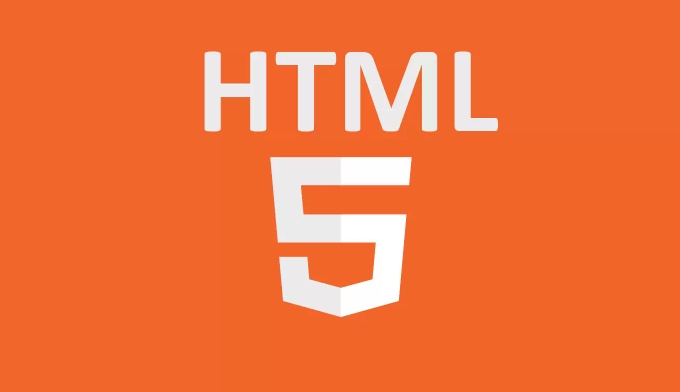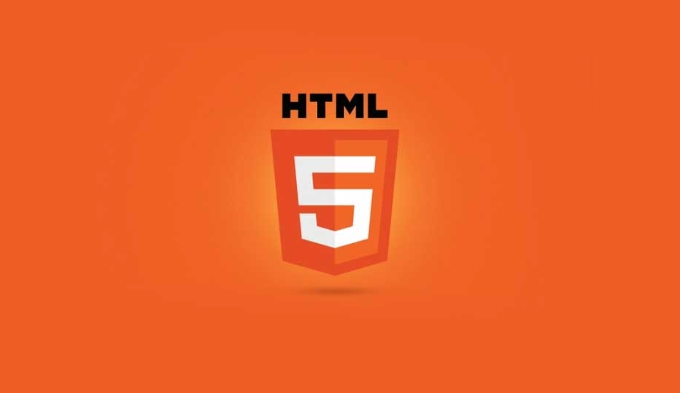The steps to verify HTML5 code normativeness include checking using tools such as W3C Markup Validation Service. 1. Open the W3C validator and enter the web page URL or paste the source code; 2. Click the "Check" button to start verification; 3. Check the error and warning content in the report and repair it item by item; 4. Based on the actual situation, determine whether to handle non-fatal errors; 5. Upload HTML files for verification during local development. Common errors include unclosed labels, discarded labels, unquoted attribute values, irregular custom attributes, and element nesting errors, which can be modified one by one according to the prompts.

Verifying whether the HTML5 code is standardized is an easy to ignore but very important link in front-end development. Although modern browsers are highly fault-tolerant to irregular HTML, maintaining a good markup structure can help improve page compatibility, SEO performance, and post-maintenance efficiency. Using online tools and verification services, you can quickly detect and fix syntax errors or irregular writing methods in your code.

Find a reliable HTML verification tool
The most authoritative HTML validator at present is the W3C Markup Validation Service , which is maintained by the World Wide Web Consortium (W3C), supports HTML5, and can accurately identify most common syntax problems. In addition to W3C, there are some other practical tools, such as:

- HTML Validator (Chrome plug-in) : Suitable for developers to check pages in real time.
- Nu Html Checker : Based on command line or local deployment, suitable for integration into the development process.
- Third-party websites such as Online HTML Validator : convenient and fast, suitable for temporary inspection.
It is recommended to give priority to the use of W3C's online verification service because it is timely updated and has clear standards.
How to use online tools to verify HTML pages
Using online verification tools is actually very simple. Taking W3C as an example, the operation steps are as follows:

- Open the W3C Verifier
- Enter the web page URL or paste the HTML source code directly
- Click the "Check" button to start verification
- View error and warning content in the report and fix it item by item
Sometimes you will see some warnings that are not fatal errors, such as false positives for certain custom properties such as data-*. At this time, we need to determine whether it needs to be handled based on the actual situation.
In addition, if you are developing locally and not online yet, you can upload and verify HTML files directly. Many tools support file upload function.
Common HTML5 verification errors and solutions
In actual use, common verification errors include:
- The tag is not closed, such as
<div> no corresponding <code>
<center></center> and <font></font>
class=myClass
<a></a> in the <a></a> tagWhen encountering these problems, you can modify the code according to the specific prompts given by the validator. For example, if the prompt "Stray start tag", it means that a tag may be placed in the wrong position or is not closed correctly; if it is "Attribute not allowed", it may be that you used an illegal attribute or a misspelling.
Some editors (such as VS Code) can also prompt these errors in real time when writing code, and find problems in advance.
Basically that's it. HTML verification is not a necessary hard requirement, but it can indeed help us avoid many potential problems in the process of building high-quality web pages. The tools are not complicated, the key is to develop the habit of checking.
The above is the detailed content of Validating HTML5 markup using online tools and validators.. For more information, please follow other related articles on the PHP Chinese website!

Hot AI Tools

Undress AI Tool
Undress images for free

Undresser.AI Undress
AI-powered app for creating realistic nude photos

AI Clothes Remover
Online AI tool for removing clothes from photos.

Clothoff.io
AI clothes remover

Video Face Swap
Swap faces in any video effortlessly with our completely free AI face swap tool!

Hot Article

Hot Tools

Notepad++7.3.1
Easy-to-use and free code editor

SublimeText3 Chinese version
Chinese version, very easy to use

Zend Studio 13.0.1
Powerful PHP integrated development environment

Dreamweaver CS6
Visual web development tools

SublimeText3 Mac version
God-level code editing software (SublimeText3)

Hot Topics
 What is Microdata? HTML5 Explained
Jun 10, 2025 am 12:09 AM
What is Microdata? HTML5 Explained
Jun 10, 2025 am 12:09 AM
MicrodataenhancesSEOandcontentdisplayinsearchresultsbyembeddingstructureddataintoHTML.1)Useitemscope,itemtype,anditempropattributestoaddsemanticmeaning.2)ApplyMicrodatatokeycontentlikebooksorproductsforrichsnippets.3)BalanceusagetoavoidclutteringHTML
 Microdata in HTML5: The Key to Better Search Engine Ranking
Jun 12, 2025 am 10:22 AM
Microdata in HTML5: The Key to Better Search Engine Ranking
Jun 12, 2025 am 10:22 AM
MicrodatasignificantlyimprovesSEObyenhancingsearchengineunderstandingandrankingofwebpages.1)ItaddssemanticmeaningtoHTML,aidingbetterindexing.2)Itenablesrichsnippets,increasingclick-throughrates.3)UsecorrectSchema.orgvocabularyandkeepitupdated.4)Valid
 Audio and Video : What about browser compatibility?
Jun 11, 2025 am 12:01 AM
Audio and Video : What about browser compatibility?
Jun 11, 2025 am 12:01 AM
Browser compatibility can ensure that audio and video content works properly in different browsers by using multiple formats and fallback strategies. 1. Use HTML5 audio and video tags and provide multiple format sources such as MP4 and OGG. 2. Consider automatic playback and mute strategies and follow the browser's policies. 3. Handle cross-domain resource sharing (CORS) issues. 4. Optimize performance and use adaptive bit rate streaming media technologies such as HLS.
 Audio and Video: HTML5 VS Youtube Embedding
Jun 19, 2025 am 12:51 AM
Audio and Video: HTML5 VS Youtube Embedding
Jun 19, 2025 am 12:51 AM
HTML5isbetterforcontrolandcustomization,whileYouTubeisbetterforeaseandperformance.1)HTML5allowsfortailoreduserexperiencesbutrequiresmanagingcodecsandcompatibility.2)YouTubeofferssimpleembeddingwithoptimizedperformancebutlimitscontroloverappearanceand
 Audio and Video: can i record it?
Jun 14, 2025 am 12:15 AM
Audio and Video: can i record it?
Jun 14, 2025 am 12:15 AM
Yes,youcanrecordaudioandvideo.Here'show:1)Foraudio,useasoundcheckscripttofindthequietestspotandtestlevels.2)Forvideo,useOpenCVtomonitorbrightnessandadjustlighting.3)Torecordbothsimultaneously,usethreadinginPythonforsynchronization,oroptforuser-friend
 Adding Audio and Video to HTML: Best Practices and Examples
Jun 13, 2025 am 12:01 AM
Adding Audio and Video to HTML: Best Practices and Examples
Jun 13, 2025 am 12:01 AM
Use and elements to add audio and video to HTML. 1) Use elements to embed audio, make sure to include controls attributes and alternate text. 2) Use elements to embed video, set width and height attributes, and provide multiple video sources to ensure compatibility. 3) Add subtitles to improve accessibility. 4) Optimize performance through adaptive bit rate streaming and delayed loading. 5) Avoid automatic playback unless muted, ensuring user control and a clear interface.
 What is the purpose of the input type='range'?
Jun 23, 2025 am 12:17 AM
What is the purpose of the input type='range'?
Jun 23, 2025 am 12:17 AM
inputtype="range" is used to create a slider control, allowing the user to select a value from a predefined range. 1. It is mainly suitable for scenes where values ??need to be selected intuitively, such as adjusting volume, brightness or scoring systems; 2. The basic structure includes min, max and step attributes, which set the minimum value, maximum value and step size respectively; 3. This value can be obtained and used in real time through JavaScript to improve the interactive experience; 4. It is recommended to display the current value and pay attention to accessibility and browser compatibility issues when using it.
 How can you animate an SVG with CSS?
Jun 30, 2025 am 02:06 AM
How can you animate an SVG with CSS?
Jun 30, 2025 am 02:06 AM
AnimatingSVGwithCSSispossibleusingkeyframesforbasicanimationsandtransitionsforinteractiveeffects.1.Use@keyframestodefineanimationstagesforpropertieslikescale,opacity,andcolor.2.ApplytheanimationtoSVGelementssuchas,,orviaCSSclasses.3.Forhoverorstate-b






